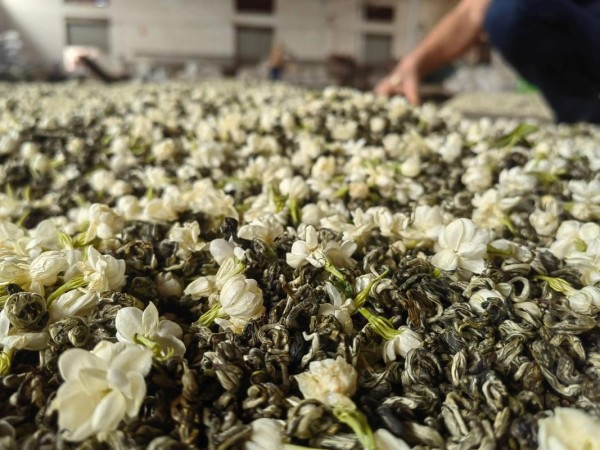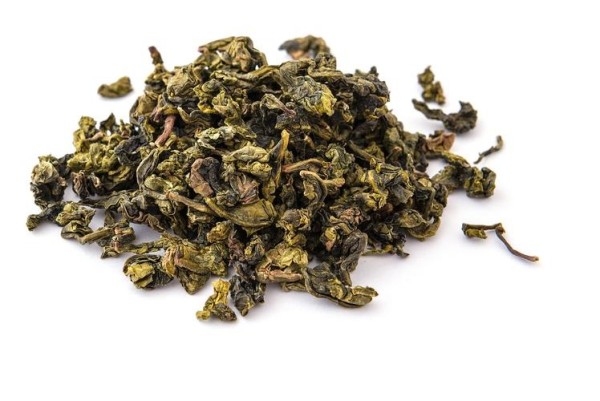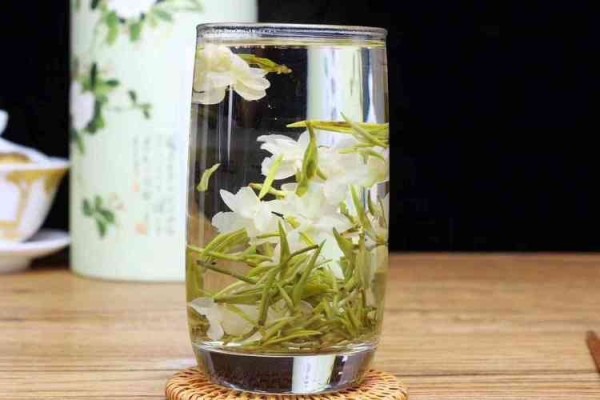Tea drinkers often talk about jasmine tea and oolong tea as if they belong to the same family — and in some ways, they do. Both are rooted in ancient Chinese tea culture, both are beloved for their aroma, and both have impressive health benefits. But beyond those similarities, jasmine tea and oolong tea are worlds apart in their flavor, processing, appearance, and even cultural significance.
If you’re trying to choose between the two, or simply want to deepen your understanding of premium teas, this guide will walk you through everything you need to know. From how they’re made to how they taste, plus their benefits and ideal brewing methods — this article breaks it all down in a clear and engaging way.
Let’s dive into the fascinating differences between jasmine tea and oolong tea.
1. What Is Jasmine Tea?

Jasmine tea is not a type of tea plant; instead, it is a scented tea. Traditionally, high-quality jasmine tea begins with green tea leaves that are layered with fresh jasmine blossoms. These flowers naturally release their aroma overnight, and the tea leaves absorb the fragrance. This scenting process can be repeated multiple times depending on the grade of the tea.
While green tea is the most common base for jasmine tea, some blends may use white tea or black tea leaves. However, the classic Chinese jasmine tea — especially produced in Guangxi Province — is almost always green tea.
Key Characteristics of Jasmine Tea
- Light, floral aroma with a soothing fragrance
- Smooth, gentle flavor
- Pale yellow or golden brew
- Naturally refreshing and calming
- Typically lower in caffeine compared to oolong
Jasmine tea is highly cherished for its fragrance, making it one of the most popular floral teas in the world.
2. What Is Oolong Tea?
Oolong tea is a traditional Chinese semi-oxidized tea, sitting between green tea and black tea. It can range from lightly oxidized (20%) to heavily oxidized (80%), and this wide spectrum is what makes oolong tea so diverse in flavor.

Famous oolong varieties include:
- Tie Guan Yin (Iron Goddess of Mercy)
- Da Hong Pao (Big Red Robe)
- Oriental Beauty
- Wuyi Rock Tea
Unlike jasmine tea, which relies on floral scenting, oolong tea derives its flavors from the craftsmanship of rolling, bruising, oxidizing, and roasting.
Key Characteristics of Oolong Tea
- Complex flavor: floral, roasted, creamy, or fruity
- Amber to deep golden liquor
- Rich aroma depending on oxidation level
- Medium to high caffeine
- Long-lasting leaves that can be re-steeped many times
Oolong tea is often called the “connoisseur’s tea” because of its depth and refinement.
3. Jasmine Tea vs. Oolong Tea: The Core Differences
Below is a detailed comparison to help you understand how each tea stands apart.
A. Processing Method
Jasmine Tea Processing
- Fresh tea leaves are harvested (usually green tea leaves).
- Leaves are lightly oxidized and dried.
- Fresh jasmine flowers are layered with the tea.
- Flowers release aroma overnight, scenting the tea.
- Flowers are removed; for premium grades, the process is repeated multiple times.
The defining feature here is the scenting process.
Oolong Tea Processing
- Leaves are withered under the sun.
- They are shaken or bruised to kickstart oxidation.
- Oxidation continues until the desired level is reached.
- Leaves are pan-fired to stop oxidation.
- They are rolled, shaped, and often roasted.
The defining feature is controlled oxidation, not floral scenting.
Result:
- Jasmine Tea = flavored primarily through flowers
- Oolong Tea = flavored through oxidation and roasting
B. Flavor Profile
Jasmine Tea
- Soft, floral, sweet aroma
- Smooth and light taste
- No bitterness when brewed properly
The jasmine scent is the star of the show, offering a calming and romantic tea experience.
Oolong Tea
- Can taste floral, roasted, nutty, creamy, fruity, or honey-like
- Richer and more complex
- Stronger than jasmine tea
Some oolongs feel silky and milky (like Milk Oolong), while others feel bold and mineral-rich.
Result:
Jasmine tea = delicate & floral
Oolong tea = layered & full-bodied
C. Caffeine Content
Jasmine Tea
- Moderate caffeine
- Usually less than oolong
- Great for daytime or evening
Oolong Tea
- Medium to high caffeine
- Depends on oxidation
- Provides a slow, steady energy boost
If you’re sensitive to caffeine, jasmine tea is the gentler option.
D. Aroma
Jasmine Tea
- Strong floral perfume
- Elegant and refreshing
- One of the most fragrant teas in China
Oolong Tea
- Depending on the type, it may smell:
- floral like orchids
- roasted like nuts
- sweet like honey
- fruity like peaches
- floral like orchids
The aroma varies widely and evolves across each steep.
E. Appearance of Leaves and Liquor
Jasmine Tea
- Greenish leaves, sometimes with jasmine buds
- Pale green or yellow cup
Oolong Tea
- Rolled or twisted leaves
- Amber, golden, or dark yellow cup
Oolong leaves unfurl dramatically during brewing, offering multiple steepings.
F. Health Benefits
Both teas are healthy, but they shine in different areas.
Benefits of Jasmine Tea
- Helps reduce stress and anxiety
- Rich in antioxidants
- Supports digestion
- Promotes relaxation
- May improve skin health due to catechins
Benefits of Oolong Tea
- Boosts metabolism and aids weight management
- Improves heart health
- Supports digestion
- Strengthens teeth due to mineral content
- Enhances mental alertness
Oolong tea is often chosen by those looking for a metabolism-boosting beverage.
G. Best Time to Drink
Jasmine Tea
- Afternoon
- Evening
- After meals
- During relaxation or meditation
Oolong Tea
- Morning
- Early afternoon
- Before a workout
- When you need focus and energy
4. Brewing Differences
Brewing each tea correctly brings out its best flavor.

How to Brew Jasmine Tea
- Water temperature: 75–85°C
- Steep time: 2–3 minutes
- Multiple infusions: 2–3 times
Never use boiling water, or the delicate jasmine aroma may fade.
How to Brew Oolong Tea
- Water temperature: 90–95°C
- Steep time: 2–5 minutes
- Multiple infusions: Up to 6–8 times
Oolong leaves open beautifully and reveal new flavors with each steep.
5. Which Tea Should You Choose?
Your choice depends on your preferences.
Choose Jasmine Tea If You Prefer:
- Floral aroma
- Light-bodied tea
- A calming and soothing drink
- Lower caffeine
Choose Oolong Tea If You Prefer:
- Rich, complex flavors
- Medium to high caffeine
- Multiple steepings
- Traditional Chinese tea craftsmanship
Both teas are premium choices — and thanks to high-quality brands like NPTEA, it’s easier than ever to enjoy authentic jasmine and oolong teas delivered straight to your home.
6. Final Thoughts
Jasmine tea and oolong tea may originate from the same tea plant, but their identities are completely different. Jasmine tea is beloved for its floral aroma and gentle taste, while oolong tea is celebrated for its craftsmanship, complexity, and depth.
Whether you lean toward the softness of jasmine or the sophistication of oolong, both teas bring centuries of tradition and a world of flavor into your cup.

